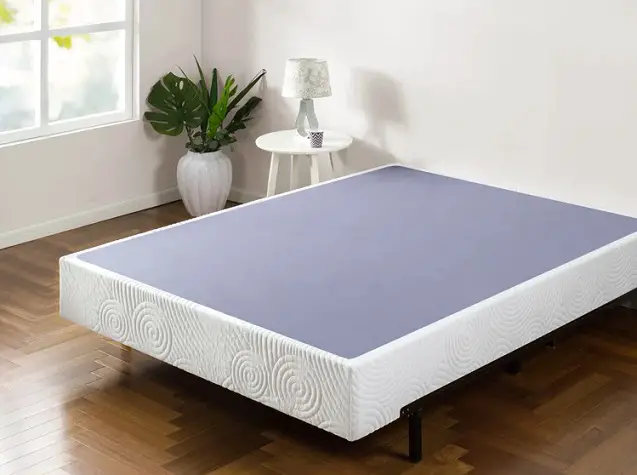Have you ever experienced the disappointment of an air mattress deflating overnight, leaving you uncomfortable and restless? Well, fear not! In this article, I will share with you some valuable tips on how to revive your rest by replacing the valve on your air mattress.
Whether you’re planning a camping trip, accommodating guests, or simply seeking a good night’s sleep, these tips will ensure that your air mattress stays fully inflated and provides the comfort you deserve.
So, say goodbye to sleepless nights and embrace a rejuvenating slumber as we explore the world of air mattress valve replacement.
Table of Contents
Understanding Air Mattress Valves
When it comes to air mattresses, the valve is an essential component that ensures proper inflation and deflation. Understanding the different types of air mattress valves, the importance of valve maintenance, and the signs of a faulty valve can help you make informed decisions and prolong the lifespan of your mattress.
Types of Air Mattress Valves
Air mattresses typically come with one of two types of valves: the Boston valve or the pinch valve. The Boston valve is a two-part valve that allows for quick inflation and deflation. It consists of an inner valve that can be opened to inflate or deflate the mattress and an outer cap that seals the valve shut.
On the other hand, the pinch valve is a one-way valve that requires external pressure to open it for inflation or deflation.
Importance of Valve Maintenance
Proper valve maintenance is crucial to ensure the longevity and functionality of your air mattress. Neglecting valve maintenance can lead to issues such as air leaks, difficulty inflating or deflating the mattress, or even complete valve failure. Regular inspection, cleaning, and lubrication of the valve can prevent these problems and keep your mattress in excellent condition.
Signs of a Faulty Valve
It’s essential to be aware of the signs that indicate a faulty valve in your air mattress. These signs can include air leaks, difficulty inflating or deflating the mattress, hissing sounds when the valve is in use, or a valve that does not hold its position when closed. If you notice any of these signs, it may be time to consider replacing the valve.
Choosing the Right Replacement Valve
When it comes to replacing an air mattress valve, selecting the right replacement is crucial to ensure compatibility and a secure fit. To choose the right replacement valve, follow these steps:
Identifying the Original Valve Type
Start by identifying the type of valve your air mattress originally came with. Look for markings or labels on the valve or consult the manufacturer’s documentation. This information will help you determine the compatible replacement options.
Researching Compatible Valve Options
Once you have identified the original valve type, research compatible replacement options. Check with the mattress manufacturer or search online for replacement valves specifically designed for your air mattress model. It’s important to ensure that the replacement valve matches the specifications and dimensions of the original valve to ensure a proper fit.
Considerations for Valve Material and Durability
When choosing a replacement valve, consider the material and durability of the valve. Opt for high-quality materials such as rubber or PVC, as these materials are known for their durability and resistance to wear and tear. Look for valves that have good sealing capabilities to prevent air leaks and ensure a tight seal.
Tools and Materials Needed for Valve Replacement
Before you begin replacing the valve on your air mattress, gather the necessary tools and materials. Here’s a list of basic tools for valve replacement:
Basic Tools for Valve Replacement
- Screwdriver or valve removal tool: Depending on the type of valve, you may need a screwdriver or a valve removal tool to remove the old valve.
- Small brush or toothbrush: A small brush or toothbrush will come in handy for cleaning the valve area.
- Cleaning solution: Prepare a mild cleaning solution using warm water and mild soap or detergent to clean the valve area.
Additional Materials for a Secure Replacement
- Replacement valve: Purchase a compatible replacement valve based on the original valve type and dimensions.
- Valve adhesive or sealant: In some cases, you may need valve adhesive or sealant to secure the replacement valve and ensure a tight seal.
- Patch kit: It’s always a good idea to have a patch kit on hand in case you encounter any minor leaks during the replacement process.
Steps to Replace an Air Mattress Valve
Now that you have gathered the necessary tools and materials, let’s walk through the steps to replace an air mattress valve:
Deflating and Preparing the Mattress
Begin by deflating the air mattress completely to make it easier to work with. If your mattress has any bedding or covers, remove them. Place the deflated mattress on a clean and flat surface.
Removing the Old Valve
Use a screwdriver or a valve removal tool to remove the old valve from the mattress. Follow the manufacturer’s instructions to avoid damaging the mattress or the valve’s surrounding area. Be patient and gentle during this process to ensure a smooth removal.
Cleaning and Prepping the Valve Area
Once you have removed the old valve, take a small brush or toothbrush and clean the valve area thoroughly. Use a mild cleaning solution to remove any dirt, debris, or adhesive residue. Allow the area to dry completely before proceeding to the next step.
Installing the New Valve
Apply a small amount of valve adhesive or sealant on the outer edges of the replacement valve. Carefully insert the replacement valve into the valve opening on the mattress, ensuring a tight fit. Follow the manufacturer’s instructions for proper installation and sealing.
Testing for a Proper Seal
After installing the new valve, inflate the mattress partially and listen carefully for any hissing sounds. Gently press and squeeze the valve to check for air leaks. If you notice any leaks or if the valve does not hold air properly, you may need to adjust the seal or apply additional adhesive. Repeat the testing process until you achieve a proper seal.
Troubleshooting Common Valve Replacement Issues
While replacing an air mattress valve is a relatively straightforward process, you may encounter some common issues. Here are some troubleshooting tips for common valve replacement issues:
Leaking or Loose Valve
If you notice air leaks or a loose valve after replacement, check the sealing and the adhesive. Ensure that the valve is securely installed and that there are no gaps or breaks in the seal. Apply additional adhesive or sealant if needed and retest for a proper seal.
Difficulty Installing the Replacement Valve
If you’re having trouble installing the replacement valve, double-check that you have selected the correct valve type and dimensions. Carefully follow the manufacturer’s instructions for proper installation. Consider seeking assistance from a professional repair service if you’re unable to install the replacement valve successfully.
Misaligned or Improperly Fitted Valve
If the replacement valve appears misaligned or does not fit properly, remove the valve and realign it. Be cautious to avoid damaging the surrounding area of the mattress. With patience and attention to detail, adjust the valve until it fits snugly and is aligned correctly.
Air Leaks After Replacement
If you notice air leaks from other areas of the mattress after replacing the valve, carefully inspect the mattress for any punctures or tears. Use the patch kit, following the manufacturer’s instructions, to repair any minor leaks. If you discover significant damage, it may be time to consider professional repair or replacement.
Tips for Extending the Lifespan of Your Air Mattress Valve
Proper care and maintenance can significantly extend the lifespan of your air mattress valve. Consider the following tips to keep your valve in optimal condition:
Regular Cleaning and Maintenance
Clean your air mattress regularly, including the valve area, to prevent the buildup of dirt, dust, and debris. Use a mild cleaning solution and a soft brush or toothbrush. Additionally, periodically lubricate the valve with silicone-based lubricant to keep it functioning smoothly.
Proper Inflation and Deflation Techniques
Always follow the manufacturer’s instructions for proper inflation and deflation techniques. Over-inflating or under-inflating the mattress can put unnecessary strain on the valve, increasing the risk of damage. Use a pump or an inflation device recommended by the manufacturer to ensure accurate and controlled inflation.
Avoiding Overweight or Rough Use
Air mattresses are designed for light to moderate use, and excessive weight or rough handling can lead to valve damage. Avoid exceeding the weight limit specified by the manufacturer and be mindful of any sharp objects or rough surfaces that could cause punctures or tears.
Storing the Mattress Properly
When not in use, store your air mattress in a cool and dry environment away from direct sunlight. Ensure that the mattress is completely deflated and clean before storing it. Avoid folding or rolling the mattress too tightly, as this can strain the valve and cause damage over time.
Seeking Professional Help for Air Mattress Valve Replacement
In some cases, seeking professional help for air mattress valve replacement may be necessary. Consider the following situations where professional repair can be beneficial:
When to Consider Professional Repair
If you encounter significant damage to your air mattress, such as extensive tearing, multiple leaks, or valve failure, it may be best to seek professional repair. Professional repair services often have the expertise and tools to handle complex repairs and ensure a secure and reliable valve replacement.
Choosing a Reliable Repair Service
When selecting a repair service for your air mattress, consider their experience, reputation, and customer reviews. Look for repair services that specialize in air mattress repairs and offer warranties on their work. Comparing quotes and asking for recommendations can also help you make an informed choice.
Conclusion
Understanding air mattress valves, choosing the right replacement valve, and knowing how to replace a valve are essential skills for air mattress owners. By following the steps outlined in this article and properly maintaining your valve, you can extend the lifespan of your air mattress and enjoy a good night’s sleep for years to come.
Remember to always prioritize safety and consult the manufacturer’s instructions throughout the valve replacement process. Happy sleeping!


